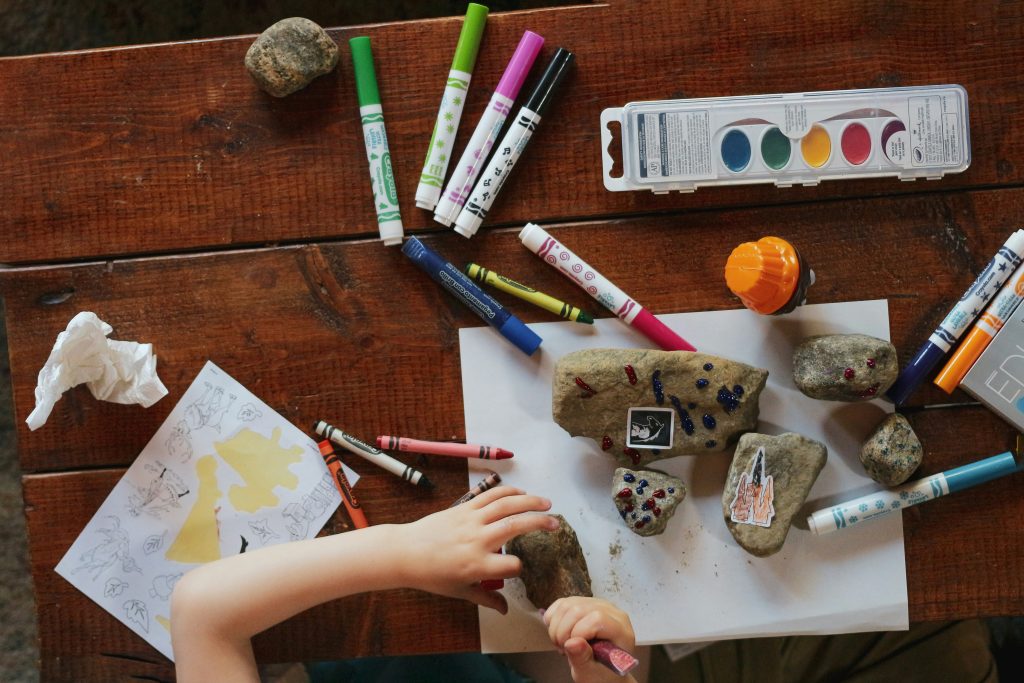How to Prevent the Summer Slide with Summer Learning
Is Summertime a Break or a Setback?

For many kids, summer is all about sunshine, freedom, fun, and most importantly no school. As it should be! But what most parents don’t realize is how quickly academic progress can slip away on those two months off. The good news? With the right kind of support and summer learning, your child can hold onto everything they’ve worked so hard to gain and prevent the summer slide.
What Is the Summer Slide and How to Prevent It
Think back to your summer days as a kid. So many great memories hanging out in the sun, with your friends, maybe going to camp, just glad to be done with school for a while. And then your first day of school rolls in, your teacher asks a basic question you could have sworn you covered last year, but you have no idea how to answer it. The summer slide is a well-documented phenomenon almost all students experience during the summer. It’s when students lose all their academic skills and the knowledge they’ve gained over the school year over the summer break. Naturally, without regular exposure and practice to learning activities, children tend to forget key concepts in math, reading, and writing. The result? When the school year picks back up, students come back already feeling behind.
Why Summer Learning Activities Matter
Did you know that 70-78% of elementary students lose math skills during the summer, and 62-73% experience setbacks in reading, with the sharpest drop occurring most often between grades 5 and 6 (Learner, 2025)? Without consistent exposure to learning, young learners risk losing key foundational skills they are expected to have for their next school year. This kind of regression can cause students to fall behind their peers and subsequently may lose some confidence which is vital to how well they engage with future learning. The good news? Dedicating just a few hours each week to reading, math games or light tutoring can help preserve the year’s progress and make the return back to school in the fall much smoother and far less stressful.
Effective Summer Learning Ideas for Every Grade
Summer learning doesn’t need to and shouldn’t feel like going to summer school. Kids need breaks! The most effective programs are the ones that feel enjoyable and purposeful at the same time. Remember that the goal isn’t to get ahead of everybody else. All we want is to help students stay sharp, fill in gaps, and return to school with the confidence to start things off well. So effective summer learning has to be light, consistent, and designed with the learner’s age, interests, and needs in mind. While that may well be best left to a tutor’s expertise, there’s quite a few things you could try to do at home including home projects or a fun book.
Math: Practical and Low-Stress
Math skills fade the fastest during the summer for most students. That makes this a high-priority area, but a little review can go a long way.
- Elementary: Math-related board games, flashcard races, or apps that incorporate skill-building into their gameplay (check out Prodigy or Zearn). Don’t forget day-to-day activities like cooking and measuring too!
- Middle school: This is a great age to start applying math to real life tasks. Think budgeting for a party, planning a road trip with distances, or even just reinforcing pre-algebra with some mini-quizzes.
- High school: Things get a little more serious around high school. The summer is a good opportunity to brush up on foundational topics they will need in the fall like fractions, functions, and algebra. Having a great online tutor can keep this review targeted and supported while beating the heat at home.
English: Read, Write, and Talk!
Keep literacy habits easy to maintain by making them low-pressure and personal.
- Elementary: Support at this level can be something as simple as just having daily reading time. Anywhere from 20 minutes to an hour could prevent major regressions in their reading level. Let kids pick what excites them, whether that’s graphic novels, silly poems or a fun novel. Writing practice can take the form of a summer journal, a simple storytelling game or writing a postcard to friends or family.
- Middle school: Building off the habit of daily reading, try to encourage a reading challenge for the summer, with a few light book reports, or even creative writing prompts to build off their current interests.
- High school: Students at this level should really aim to read one or two classic or contemporary texts of a substantial literary level. This is a good opportunity to put those essay-writing skills they learned in school to good use. Tutoring can help drastically with improving essay structure, thesis development, and close reading. Students tend to struggle with essay writing in high school particularly because they don’t have enough chances to practice it.
Science: Hands-on Fun
Science is all around us and thrives on a budding curiosity.
- Elementary: Nature walks, DIY science experiments, and YouTube channels like SciShow Kids and National Geographic Kids can inspire big questions and build observational skills. Kids are naturally curious, it’s our job as adults to encourage their questions with open-ended answers that enable their thinking.
- Middle school: Keep trying at-home labs, science-based projects they could be interested in (like building a solar oven), or watching science documentaries. Virtual or in-person educational summer programs are also a wonderful opportunity at this age.
- High school: At this age, students could benefit from summer programs, an independent project related to biology, physics, or environmental science. Tutors are a great resource here to help review lab/report skills or address any knowledge gaps in any of the three sciences.

Common Myths About Summer Learning
Myth #1: Summer learning = More schoolwork
Reality: Good summer learning doesn’t have to feel like homework. The best approach blends review with creativity. The goal isn’t to overload your child with worksheets, but to keep their brains active that feel non-intrusive and low-pressure.
Myth #2: My child needs a total break
Reality: Breaks are 100% essential, but so is consistency. Students absolutely should rest and recharge over the summer break but they can do that while still spending a small amount of time each week practicing key skills. Just 2-3 hours a week of light review can protect months of academic growth.
Myth #3: Only struggling students need summer learning
Reality: Even high-achieving students can lose ground when learning stops altogether. While there is a place for catching up over the summer if it’s needed, it can just be about staying sharp and building confidence. As long as you personalize the summer learning to align with their learning goals, summer learning can benefit students of all abilities.
Ready to Make the Most of Summer?
Summer learning doesn’t have to be complicated — but it does have to be consistent. Whether your child needs help keeping up, staying sharp, or getting ahead, the right support can make all the difference.
Want the best summer learning plan for your child?
We’re offering free consultations to help you get started with one of our expert tutors. Let us match your child with a program that fits their goals, schedule, and learning style — so they can head into the new school year confident and prepared. Click here to schedule a consult call with one of our education experts.